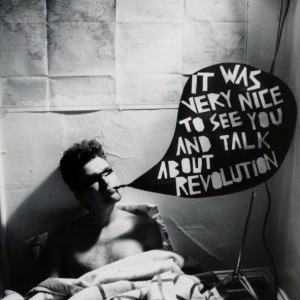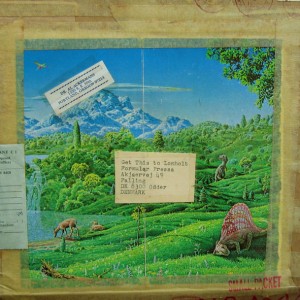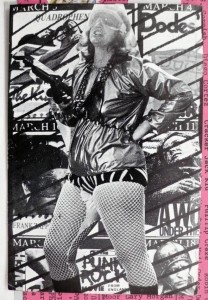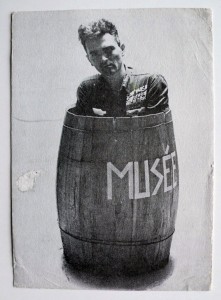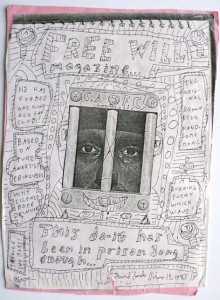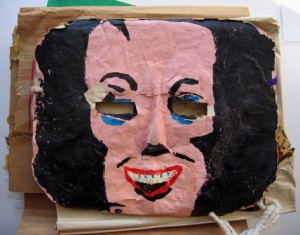*
GRAVITY TAKES THE LAST MAN
An introduction by Niels Lomholt
The Fall is where this book begins. Art is a Fall full of proposals.
Mapping, targets, purpose or structures, possibilities of thinking and moving.
There was a French film some years ago, I don’t remember title, instructor or plot, just this one scene: In a Parisian banlieu a young Algerian is sitting on top of a high-rise block and tell this joke to his friends: Mohammed jumps from the top, eighteen storey up, each time he passes a floor, he says to himself, so far so good.
This could very well be the motto for a book on Mail Art.
Coincidence, delays, detours, all but the straight way home, is the beauty of it all.
This is a detour book. You can follow the pages chronology, so far so good, but soon chronology is out of joint and fade away. The book consists of many small projects, an endless row of beginnings and endings, interwoven like a carpet. Mail Art is the perpetual cross road of this carpet.
MAIL ART
There was a School of Correspondence in New York late 50’s early 60’s and other art movements that were related to Mail Art, but Mail Art that developed and blossomed in the 70’s had its own distinct characteristics. Over a period of fifteen to twenty years, Mail Art developed a large network of artist from all over the world. Within this network circulated a large number of unique and interesting artworks and projects.
This book’s aim is to show some of these artworks and projects.
Mail Art was a network based on exchange, a very forward activity. You produce something, post it, and to get a response, perhaps. Mail Art is not an –ism. Mail Art was not even an art form. Mail Art was a network, a practice to distribute an show.
Mail Art was a pure network, open and engaged in its own function. Dancing like a punk-queen, schizoid moves on the dance floor of broken ideologies. Mail Art as underground Air Mail.
The network had many shapes and forms defined by its participants.
Often the dialog developed into intense collaborations on larger projects or an exchange of personal and elaborate works of art, drawings, paintings, music, literature etc. (Correspondence A-Z). This collaboration made the archives into a very personal thing, hence the somewhat pompous title: LOMHOLT MAIL ART ARCHIVE, to distinguish it from other Mail Art archives.
Mail Art’s most valuable contribution to art was a very large network, open and free for all, no censorship and no return no entry fee and no expulsion. This openness yet sealed from the public eye, produced a large number of beautiful and radical works, artworks concerned with political and social situations and artworks as ART.
All this had been tried before under various circumstances, but this time the situation was right, and the scale and energy of the network far exceeded any former network. The postman was ready and cooperative, the photocopy machine was ready, the value of paper, pencil, glue and stamps was affordable to in most countries, and the Iron Curtain was cracking. The situation was ripe and made the network expand worldwide.
The characteristic of Mail Art developed through an exchange of work that was not burdened by materialistic values. Works give away with no strings of copyright. Contacts across the borders and Iron Curtain, passed dictators and commercialism.
The network was used for many different reasons, breaking of ice, censorship, isolation, the narrow-minded art institutions, distribution etc. Or just a wish to participate in a network with energy, social contact and a free exchange of works of art, unlimited.
The Mail Art exhibitions and catalogues, became a important event of Mail Art, it was the focal point that kept the network together. There were exhibition in private or public, spaces, museums, and galleries, the activities were enormous. In the heydays of the movement (1977 – 1983) there could easily be ten to twenty exhibitions per month in different parts of the world. Another activity that kept the movement on track were publications, magazines, books, and other printed matter. It was the golden days of printed matter. This was the meeting point and places to show works.
The art institutions were invited, but absent and excused.
Another characteristic of the Mail Art Network was the background from which the participants came, music, literature, different suspect scientific areas, political activists and other outcast. This wide range of participants brought a great number of themes and techniques to Mail Art.
Many art movements and artist of the 60’s and 70’s had a flirt with Marxism and the extreme left. The archive is, of course, marked by its time and space, social and political. The historical stage set is important. East European works marked by the political censorship, Latin American Mail Art reflect the political leadership and the big neighbour to the North.
This is only said in passing, as it is not this books intention to answer historical questions, only as far as the voices in this book are willing to reveal their context.
Other chapters could be written on Mail Art and the postal service. The envelope as Mail Art ‘skin’. Distances and time, the postman and other associates, censorship, sorting machines, wear and tear, coffee and rain, delay, stamps (briefmarks) and stamps. And the postal mind, a letter stamped 1983 from a prison in Mexico, arrived in 1994 to: Lomholt, Denmark. The postal journey: magic.
*
*

